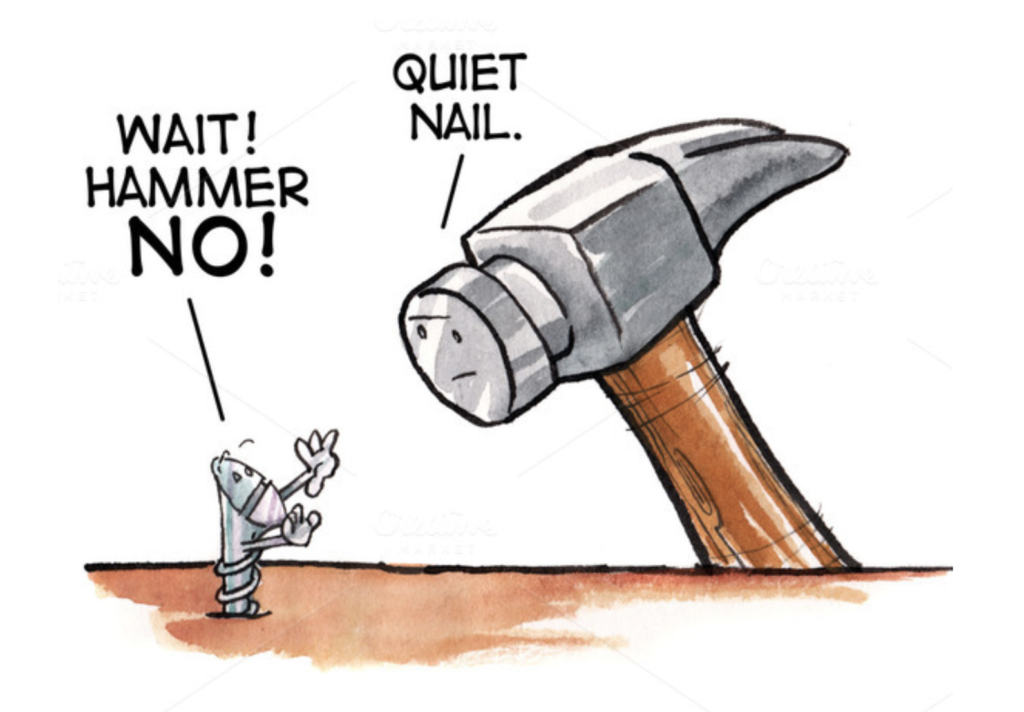What are digital products and product management?
26 de August, 2020Product vision
15 de September, 2020In the previous chapter we just reviewed some basic concepts of digital products. Now let’s understand what a head of product is, what its roles and responsibilities are.
As I mentioned in the introduction to the book, the role of the product leader is divided into 3 major areas:
- product vision and strategy: usually takes around 10% of a head of product’s time. Defining the product vision is defining what the product will look like in the future. What do you want the product to be when it grows? And strategy is the way to reach the vision. Building product vision and strategy is a job that the head of product does in collaboration with the company’s founders, senior management, and the board, with input from all areas of the company and the customer. I will talk more about building vision and strategy in the following chapters.
- help product managers in their development: depending on the seniority of your team, this will take around 10% to 40%. The more junior and inexperienced, the more time you will have to dedicate to the development of your team. I will talk later about some of the Tools important for the development of your team. 1: 1 meetings, team meetings, evaluation and feedback, product council, product review, and team organization.
- expectations management: at least half of your time will be devoted to expectations management, reaching up to 80%. In ​​product development and, mainly, when leading digital products, there is no “excessive communication”. There will always be someone who has expectations about the product and is not yet aware of its vision and strategy. With many companies with whom I talk about digital products, I hear a very common complaint that the area of ​​product development is a black box. And that generates a lot of expectations from other areas, which need their product pains to be resolved. On the other hand, the product development team also has expectations, wants to know what the product vision is, what is the strategy, the roadmap, the priorities. The best way to manage these expectations is through communication. As mentioned above, the Tools that will be presented later will be very useful for managing expectations.
Asking people who want to grow in their careers to become head of product why they want this career progression, many answers that they want to be able to have a more active voice and even guide the definition of the product’s vision and strategy. Well, I’m sorry to frustrate you but, as I mentioned earlier, this is only 10% of the work for a product leader.
The other 90% of a product leader’s time is devoted to helping product managers in their development and managing expectations. As I said above, the more junior and inexperienced your team is, the more time you will have to dedicate to the development of your team, which can take up to 40% of your time. On the other hand, if your team is junior and inexperienced, more work will need to be done to manage expectations, which can take up to 80% of your time.
Imagine that you have a junior and inexperienced team, that takes 30% of your time, and that, as a result, you have a lot of expectation management to do, like 70% of your time. That is, 100% of your time will be spent helping your team to develop and managing expectations. Therefore, it is important that you take great care with the seniority of your team, otherwise there will be no time in your day-to-day to take care of the vision and strategy of the product you lead.
Seniority levels
This is a topic that we hear almost daily at all companies: seniority levels. There are many situations in which this topic comes up. Hiring, performance evaluation, increases, promotions, bonuses, etc. The more senior a person is, the more you expect from him. After all, she has experience and knowledge to deal with the most difficult situations at work. My experience has shown me that we need to analyze a person’s seniority based on three dimensions:
Time
We normally assess seniority based on time. For example, if a person has more than 10 years of experience, he is a senior. However, time alone is not enough. If she has done the same thing in these 10 years, without questioning herself and without continually looking to improve and try new things, she has not evolved as a professional. She didn’t put any new tools on her utility belt. Therefore, you will have a lot of difficulty when facing new situations since you do not have the necessary tools.
Knowledge
Therefore, in addition to time, we must also consider knowledge. We can translate knowledge as the set of tools that a professional has in his utility belt. If a person knows only one tool, he will use it to solve all problems. It’s like the law of the hammer, for a hammer, everything looks like a nail. This law is attributed to Abraham Maslow, an American psychologist well known for the pyramid of hierarchy of needs concept.

The more tools someone has, the easier it will be to face new situations and find solutions. That is why consultants are so versatile. They work for short periods of time on different clients, facing different problems and need to create ways to solve new problems, since each new client they work for has different problems and contexts.
Sometimes, a consultant with 3 years of experience, working with 6 different clients, will have many more tools in her tool belt than someone who has been with the same company for 10 years. The consultant is likely to be more senior than the person who spent 10 years in the same company, doing the same job and solving the same problems without question and continually seeking to improve, improve and try new things.
To assess someone’s seniority – even when we are self-evaluating our own seniority – we need to look at years of experience and the quality of the knowledge accumulated during those years.
However, this is not enough.
Behavior
Behavior is a dimension of seniority that is not normally discussed when assessing someone’s seniority, but it is just as important as time and knowledge. Sometimes I have the impression that it is even more important than time and knowledge.
Behavioral seniority means that the person knows how to behave properly:
- be ethical, be a person with integrity and the right intention;
- have alignment with the company’s values ​​and culture;
- have alignment and commitment to the company’s purpose;
- have alignment and commitment to the company’s strategic objectives.
I will give some examples and counter-examples of behavioral seniority to make the concept clearer:
- Objectives: all companies have objectives. All companies have quantifiable objectives and targets are set to help achieve those objectives. A well-known method for setting objectives and quantifying results is OKR. Some companies even use these targets to define their employees’ variable compensation, also known as bonus policy. Invariably, once targets are set, things change. And even when everything is stable, it may be necessary to do work unrelated to the targets. Someone with behavioral seniority understands that things change, that their work is not limited to previously agreed targets, and will do whatever is necessary. Someone without behavioral seniority will say that she cannot change or do anything other than what is defined as her target.
- Complaining: as we all know, sometimes things do not go as we expect. That’s how life is. And there are always people who complain. And it is always someone else’s fault and there are always many excuses to explain why things did not go as we expected. Complaining without doing anything to help resolve the situation is typical behavior for someone who has no behavioral seniority. A senior person, when facing problems, tries to understand what happened, without looking for the culprits. She searches for a solution to the problems and tries to understand how to prevent these problems from occurring again.
I believe that with these two examples and counterexamples, it becomes clearer what I meant by behavioral seniority.
In my opinion, this is the most important dimension of seniority. If you have someone with seniority in knowledge and many years of experience, but without behavioral seniority, she will not only be more likely to perform poorly, but will also interfere with your team’s performance.
What is your seniority?
So, the next time you are assessing someone’s seniority level – including when you are evaluating your own seniority – evaluate years of experience, quality of knowledge accumulated during those years, and behavioral seniority. Only then can you fully assess that person’s seniority level.
Summing up
- The head of product is responsible for coordinating the definition of the product vision and strategy, for helping product managers in their development, and for managing the expectations of all people who have an interest in your product.
- A very important concept to help a head of product with his responsibilities is the concept of seniority, which has 3 dimensions, two well known, time and knowledge, and a third one not so known, but just as important as the others, the seniority of behavior.
In the next chapter we will understand a little more about the product career.
Missing something?
So, did you miss something in this chapter? What else would like me to cover?
Digital Product Management Books
Do you work with digital products? Do you want to know more about how to manage a digital product to increase its chances of success? While you wait for new book, check out my Digital Product Management bundle with my 2 books where I share what I learned during my almost 30 years of experience in creating and managing digital products.

